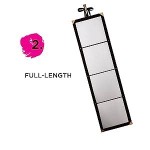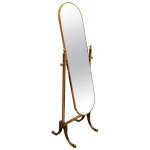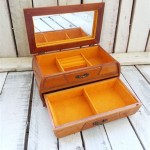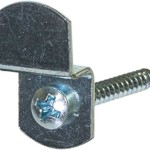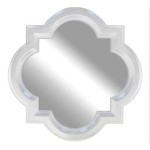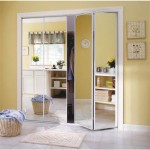Mirror Touch Up Paint
Maintaining the pristine appearance of mirrors can be challenging, especially in high-traffic areas. Scratches, chips, and blemishes detract from their reflective quality and overall aesthetic. Mirror touch-up paint offers a practical solution for restoring minor imperfections and extending the lifespan of mirrors without requiring complete replacement.
Understanding Mirror Touch Up Paint
Mirror touch-up paint is a specialized type of paint formulated to adhere to the delicate silvered backing of mirrors. Unlike standard paints, it possesses a unique chemical composition that allows it to bond effectively with the reflective surface without causing damage or discoloration. The paint is typically designed to dry quickly and create a seamless, reflective finish that blends seamlessly with the surrounding mirror.
Types of Mirror Touch Up Paint
Several types of mirror touch-up paint cater to different needs and levels of damage. Some common types include:
Solvent-based paint: Offers excellent durability and adhesion. However, it requires careful handling due to the presence of solvents. Adequate ventilation is crucial during application.
Water-based paint: Easier to clean up and produces less odor compared to solvent-based alternatives. It is a user-friendly option for smaller touch-ups.
Epoxy-based paint: Provides superior resistance to abrasion and chemicals. It's best suited for areas exposed to moisture or frequent cleaning.
Spray paint: Useful for covering larger areas or achieving a more uniform finish. Application requires careful masking to protect the surrounding mirror surface.
Choosing the Right Mirror Touch Up Paint
Selecting the appropriate mirror touch-up paint depends on several factors, including the size and depth of the damage, the type of mirror, and the surrounding environment. Consider the following when making your choice:
Damage assessment: Small scratches or chips may only require a thin application of paint, while deeper damage might necessitate a thicker, more durable option like epoxy.
Mirror type: Certain types of mirrors, such as antique or specialty mirrors, may require specific formulations to avoid damage. Consult with a professional or manufacturer for guidance.
Environmental factors: For mirrors exposed to moisture or frequent cleaning, an epoxy-based paint offers better protection. In well-ventilated areas, solvent-based paints provide excellent durability.
Preparing the Mirror for Touch Up
Proper surface preparation is critical for achieving a seamless and long-lasting repair. Follow these steps to prepare the mirror:
Cleaning: Thoroughly clean the damaged area with a glass cleaner and a lint-free cloth. Remove any dust, dirt, or grease that might interfere with paint adhesion.
Drying: Ensure the surface is completely dry before proceeding with the application. Moisture can prevent the paint from adhering properly.
Masking: Protect the surrounding mirror surface with masking tape to prevent accidental overspray or smudging. This is particularly important when using spray paint.
Applying Mirror Touch Up Paint
Careful application is essential for achieving a professional-looking repair. Follow these steps for effective application:
Thin coats: Apply the paint in thin, even coats to avoid drips or runs. Multiple thin coats are preferable to one thick coat, which can lead to uneven drying and a less satisfactory finish.
Drying time: Allow each coat to dry completely before applying the next. Refer to the manufacturer's instructions for recommended drying times.
Smoothing: Once the final coat is dry, use a fine-grit sandpaper or polishing compound to smooth out any imperfections and blend the repaired area with the surrounding mirror surface. Exercise caution to avoid scratching the mirror.
Safety Precautions
When using mirror touch-up paint, it's essential to follow safety precautions to protect yourself and the environment. Consider the following:
Ventilation: Ensure adequate ventilation, especially when using solvent-based paints. Work in a well-ventilated area or wear a respirator mask.
Eye protection: Wear safety glasses to protect your eyes from paint splatters or fumes.
Gloves: Wear gloves to prevent skin irritation from contact with the paint.
Disposal: Dispose of paint and other materials responsibly according to local regulations.
Maintaining Repaired Mirrors
Once the repair is complete, proper maintenance will help preserve the mirror's appearance and extend its lifespan. Follow these guidelines:
Gentle cleaning: Use a soft, lint-free cloth and a mild glass cleaner to clean the repaired area. Avoid abrasive cleaners or scrub pads, which can damage the paint.
Avoid harsh chemicals: Avoid exposing the repaired area to harsh chemicals or solvents, which can weaken the paint and affect its reflectivity.
Regular inspection: Regularly inspect the repaired area for any signs of wear or damage. Address any new imperfections promptly to prevent further deterioration.

Electroplating Mirror Liquid Reflective Paint Pen Hand Temu

Bentley Continental Moonbeam Silver Mirror 9560109 P4 Touch Up Paint Kit Color N Drive

Paint For Audi A3 Stone Grey Mirror Grill 2004 2024 Code L1qp Touch Up Car Spray

Electroplating Mirror Liquid Reflective Paint Pen Hand Temu

For Hyundai P3 P3g Mira Mirror Touch Up Or Spray Paint

Electroplating Mirror Liquid Reflective Paint Pen Hand Temu

Black Plastic Touch Up Paint Wing Mirror Side Trim Bumper Colour Rer

Paint For Audi A3 Stone Grey Mirror Grill 2004 2024 Code L1qp Touch Up Car Spray

Silver Liquid Chrome Mirror Markers Kerifi Oil Based Permanent Art Marker Set Reflective Gloss Metallic Repair Paint Pen For Model Metal Plastic Diy Craft 5pack 1 3mm Com

Dark Grey Plastic Touch Up Paint Wing Mirror Side Trim Bumper Colour Rer


